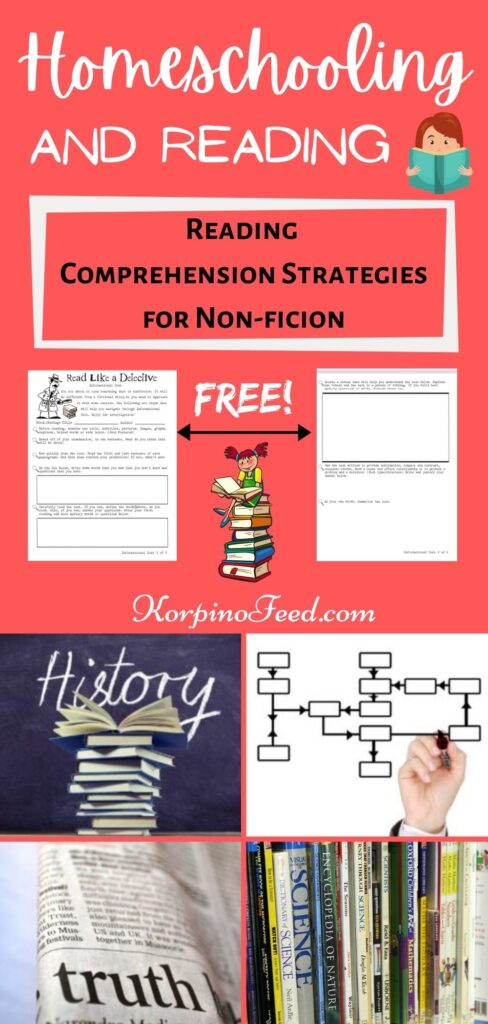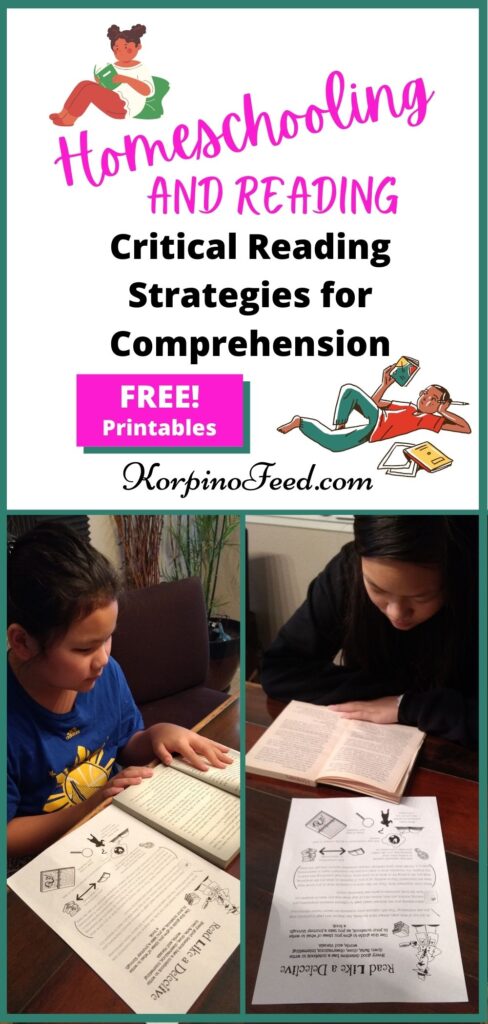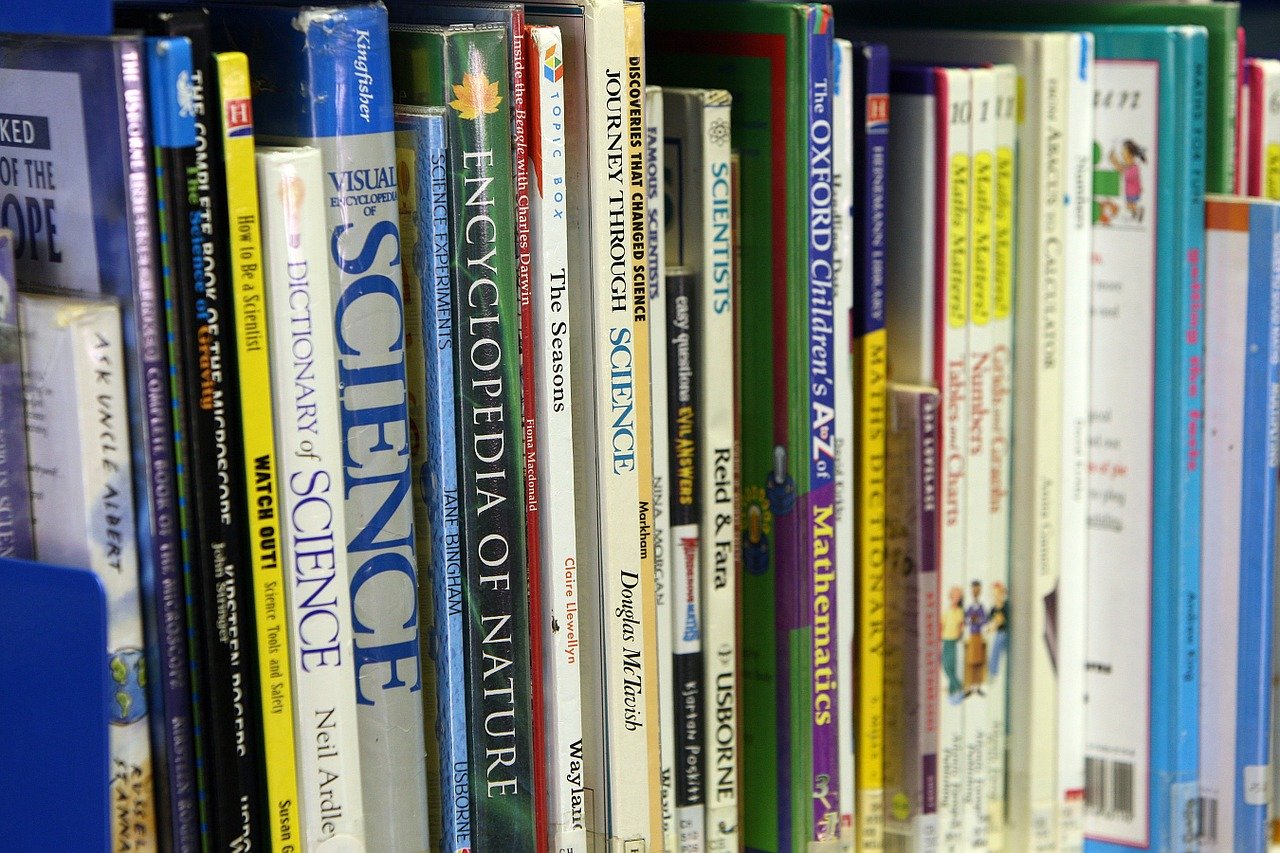A Different Approach for Nonfiction
Homeschooling and reading informational text can be challenging. As parents, we have to keep in mind that it is different from literary text. You may ask, “What’s the difference?”. If they can read the words on the page everything should be fine, correct? Yes, but keep in mind that the ability to read words on paper, does not always translate into comprehension. The primary goal of reading anything is comprehension. If we do not understand what we are reading, then it would not be considered as a successful experience.
For example, let’s consider the following text from Britannica.com (https://www.britannica.com/science/covalent-bond):
Covalent bonds between identical atoms are nonpolar, while those between unlike atoms are polar. This partial ionic character of covalent bonds increases with the difference in the electronegativities of the two atoms.
Unless you have a background or interest in chemistry, the majority of us have no idea what those two, simple sentences are about. Like most of our older kids, we have a sufficient amount of decoding skills to read about covalent bonds fluently. But like us, comprehension is compromised.
The Difference Between Reading Literary and Informational Text
Literary
Research for parenting has found that reading to your child has benefits even before babies are born. Those stories that we read are typically about the valiant knight, the beautiful princess, animals as characters, or adventures with mommy and/or daddy. They are stories that can start with, “Once upon a time,” and end with, “The End.” These are common characteristics of literary selections or fiction. A child’s ever growing and malleable brain feeds off of the imaginative characters and events of a fictional story. This continues when they get to favorites like Sperry’s Call It Courage and L’Engle’s A Wrinkle In Time.
From birth to adulthood, the continuity of reading literary text definitely puts an impression on our malleable brains. When reading fiction, we grow accustom to its elements and we are able to make mental predictions based on stories that we have read or heard. Not to mention, when choosing books to read, we make selections based on our personal preference or interest to genres or authors. This gives kids and adults a major advantage, as it relates to comprehension.
Informational
As we saw earlier, comprehension can be a struggle when reading informational text, even if ever word is either known or able to be read. As adults, we may not always notice it, but our brains do a shift when we go from reading Amelia Bedelia, before the kids go to sleep, to the owner’s manual or set up guide to our new flat screen TV. To get the settings correct, we slow down and read it more carefully.

Informational text is nonfiction. Two of the more difficult subjects in school, for many students is Social Studies and Science. The two subjects require interest and discipline to achieve some academic success. Textbooks and other reading material will mainly be comprised of informational text. This is a big reason why many students struggle with these two classes. If the students do not have adequate background knowledge or interest in the focus topic, reading informational text will be more challenging to comprehend.
Many times, comprehension in these two subjects is synonymous with the memorization of facts, rather than the application of facts. Imagine if there was more of a focus on the application of facts in Social Studies. Changes can be made for the future, by not allowing the past to repeat itself. This is definitely something to consider when homeschooling.
Homeschooling and Informational Text
When homeschooling and reading informational text, give your kid(s) a head start or a heads up before they start reading. I used to explicitly remind my students, even in a Science or Social Studies class, that they are about to read informational text. There are many strategies that they can use to help them navigate their way through nonfiction.
Frame of Mind
The first strategy that they should utilize comes before reading. They have to get themselves in the correct frame of mind. They have to literally tell themselves, “This is not a story, this is going to consist of learning new words and information.” This should trigger a slower and more careful reading approach. Not slower as it relates to fluency. Slower, considering the processing or think time of the new material.
Titles and subtitles, or headings and subheadings, frame the reader’s thinking by giving them an insight of what they are reading between titles. If a section has the subtitle “Covalent Bonds” preceding it, rest assured that section will be about covalent bonds. Just by previewing titles and subtitles before reading, comprehension and learning plausibility is increased.
More Text Features
When reading at home, our homeschoolers need to maximize all of their resources because “asking three before me (teacher)” is not always going to be available at some houses. Most informational text offer many features that are beneficial to their comprehension. Oddly enough, some of these features go unnoticed, as helpful tools.
Good readers always visualize what they are reading. Informational text offer visuals in the form of images, photographs, graphs, maps, timelines, and diagrams. Each of these visuals complement the text. In addition, many of these visuals have labels or captions. Each of these features are a resource that will help all readers.
In many textbooks, publishers offer additional pieces of information or features for readers. Bolded words notify readers of key vocabulary to the understanding of the text. Also, many textbooks have boxed in or framed notes that provide information not included in the text. Sometimes it is a side story about someone or an event in the past, that relates to the topic. Lastly, don’t forget that textbooks have a glossary and an index too.
There’s always a visual
Sometimes, as homeschooling parents, we will find a great article about a topic that we are addressing but it does not have any visuals. If it is something that you feel is going to help your homeschooler(s), don’t skip it just because you don’t think that it is kid friendly. The reality is that they are not always going to read text with pictures. We have to teach them the skills to navigate and understand any piece of text.

If it lacks a visual, make one. Notice that I did not say to “draw” a visual. Don’t let a lack of artistic ability be a factor. Together, you can create graphs or timelines. When I was working on my doctorate, one of the best ways that I read through scholarly research was by creating flow charts. If someone peaked over my shoulder, it might be trivial to what I was creating but it made sense to me. It would only solidify my thinking, if I had to explain my visual to someone. Guess what was happening? Comprehension.
In addition to creating visuals, I also recommend further interaction and critical thinking with the text by way of Close Reading Strategies. For more information on Close Reading visit: https://www.ljhs.org/pdf/Close_Reading_Strategy_parents_guide.pdf for a guide to get you and your homeschooler(s) started, but I suggest further research to find ways to make it work for you.
The Overall Goal When Reading
Again, whether it is literary or informational text, the overall goal of reading is comprehension. Homeschooling and reading informational text provides us with opportunities to go beyond the standards of traditional schooling. Taking our comprehension to a higher level of critical thinking enhances our reading experience and purpose. Text features will help readers process informational text, but the overall comprehension will come from understanding the purpose of the text.
Informational Text for Information
Informational text can have the simple purpose of providing information. This is the most common and basic type of informational text. It can also be referred to as “Expository Text”. This is the type of writing in textbooks. They simply provide readers with facts. A passage about the Golden Gate Bridge would be a perfect example.
Informational Text to Bring Awareness to a Problem and Provide a Possible Solution

Anyone in the Bay Area would have a valid argument that the toll to cross the Golden Gate Bridge is very expensive. Those that use the bridge on a daily basis, as part of their commute would definitely see this as a financial problem. Whether in the realm of appropriateness or not, I am sure that there are tons of possible solutions floating around out there. Editorials in the newspaper are a good example of this informational text structure.
Informational Text to Compare and Contrast
Another type or text structure for informational text can take two or more topics and compare them. This is evident in a text comparing the teachings and impact of Socrates, Pluto and Aristotle. If your homeschooling kid(s) are writing their text to text connections, they are writing a compare and contrast informational text.
Informational Text for Sequencing
Informational text that use sequencing as its structure have deemed it crucial that readers know and understand the progression of actions. This is how they can fully understand why and how an event occurred. Causes of wars, the depletion of an Ancient Civilization or the discovery of Penicillin and Insulin are prime examples of this structure. This is also the type where creating a flow chart is beneficial, if images are not available.
Informational Text to Explain a Cause and Effect Relationship

The final type or structure articulates the cause and effect relationship of an event. This is similar to the sequencing structure, but it does not depend on the time stamps for the causes. A passage with this structure can elaborate on how systemic racism and stereotypes have shaped today’s society. A separate, complimentary passage can further explain or justify this relationship through a sequencing structure. Now imagine if our homeschoolers were able to find both of these passages to make connections. That’s comprehension at a higher level.
Practice Makes Permanent
Through all of my years of professional development in education, the most influential piece of learning came from three words, “Practice makes permanent”. Such a simple tweak to a phrase that we have gotten wrong all of our lives. Perfection, essentially is unattainable because bars should be constantly raised. In a sense, perfection could be viewed as settling or even giving up on progress. If we are practicing to create permanence, that is another way of saying stability, longevity or durability. On the flip side, what does it do for your mental psyche if you hear, “If you don’t practice or don’t practice enough, you’re not perfect.” I personally think that, “You reap what you sow” is more encouraging.
Create a homeschool environment of practice when reading informational text. It will start off as a struggle, but so did understanding stories as a baby. In this case we have the advantage of knowing the language. A desired permanence will take time, practice and patience.
Resources
Practice informational text passages for homeschooling can be found at Reading A-Z (https://www.readinga-z.com/commoncore/informational-text/). Their library of texts are categorized according to age, grade and Lexile Levels. If you are not sure about your kid(s) Lexile Level, then go with the other two markers and text that interests them the most. Take note of and monitor the Lexile Level and adjust as needed for future selections. Again, homeschooling and reading informational text can be challenging. In my previous blog Homeschooling and Reading, I painted the picture that books are as effective as teachers. There is so much learning that our kids can obtain through the comprehension of informational text. As adults, we know that it is a major source of our learning.

Homeschooling is not always easy and there can be many moments when we question what we are doing. If there is any topic or subject that you would like for me to elaborate on, please leave a comment and I will do my best to give you my two cents.
Click>> here << to Download our Reading Comprehension for Informational Text:

For More on Homeschooling and Reading Comprehension and Higher Level Thinking with More Free Printables!
Click >>here<<

